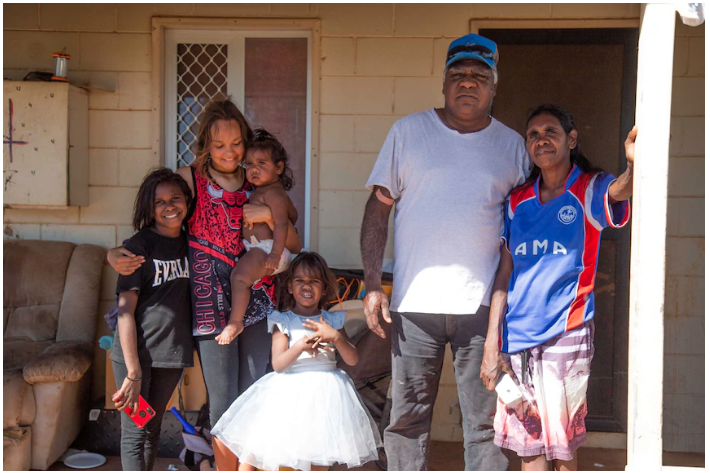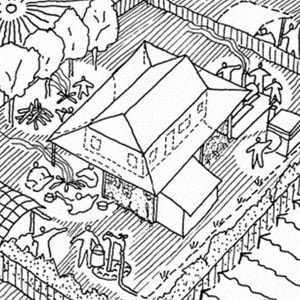DISCUSSION – Building Homes to reduce Crowding
A massive housing shortfall is contributing to crowding in Tennant Creek, Northern Territory. Fixing homes can be part of the solution.
In January, the ABC published an article saying that 8000-12000 new homes are required to meet the needs of local housing. Healthabitat thinks there also needs to be discussion around how new and existing houses can be maintained for long-term health benefits that functioning housing can offer.

Norm Frank and his family have their own place after an eight-year wait.(Image from ABC News: Samantha Jonscher)
Some tenants have waited up to 8 years before they are able to move into a house with their family. In the meantime, they were living with family. Sometimes this leads to 14 people living in a single house.
What are the negative consequences of Crowding and how can they be reduced? – from Housing for Health – the Guide;

HLP5 – Reducing the negative effects of crowding
Crowded living conditions, the close proximity of a group of people, increase the risk of the spread of infectious diseases, such as respiratory infections, meningococcal disease, rheumatic fever and tuberculosis.
Crowding of a house may be a regular, temporary and desirable event. A party, ceremony or sports carnival may all be important cultural events involving large numbers of people. This should not be confused with long term, involuntary crowding together of one large family into a very small house or several families into one house due to lack of available housing or poverty.
Many people using a house may lead to high power bills and the choice between making rental payments, buying food or paying for power. Lack of power may mean losing access to all the health hardware services provided by the house and a greater health impact. Therefore, energy efficiency, in house design and specification, should be seen as playing an important part in reducing crowding and maintaining health.
More houses may reduce the negative impacts of crowding, however the example above shows that it is also necessary to design for peak populations. This can be achieved by providing more health hardware in houses, ensuring access is possible to the health hardware, developing the yard and edges of houses to provide more household service, cooling and heating several rooms in the house, providing additional sleeping areas for guests, and ensuring the health hardware in most houses in a community is functioning most of the time through regular maintenance.
The Guide also has specifications for reducing the negative effects of crowding;
- B5.1 .1. health hardware such as taps, shower fittings, laundry tubs, power points and light switches are good quality, will withstand high usage in large households and can be used by people with disabilities
- B5.1 .2. that enough hot water is available to meet the needs of the household and cope with fluctuations in household population
- B5.1 .3. there are clothes washing (ideally washing machines) and drying facilities sufficient to meet the needs of the household
- B5.1 .4. toilets and wet area services meet the requirements of the household size, and are separated so that shower, laundry and toilet facilities can be used by several people at once
- B5.1 .5. at least one toilet and shower area is sized to be accessible to people who use wheelchairs or can be adapted in the future to be fully accessible
- B5.1 .6. the wastewater removal system is adequate for the population size and can cope with expected peak loads in the house
- B5.1 .7. at least two options for cooking food have been provided (eg a place for an electric fry pan as well as a stove top), and the food storage and preparation areas in the kitchen are sufficient for household size
- B5.1 .8. the bedrooms have heating and/or cooling systems suited to the climate, and people will not have to share one cooled or heated common space for sleeping
- B5.1 .9. the plan of the house, and the location on site, can accommodate future alterations and additions.









